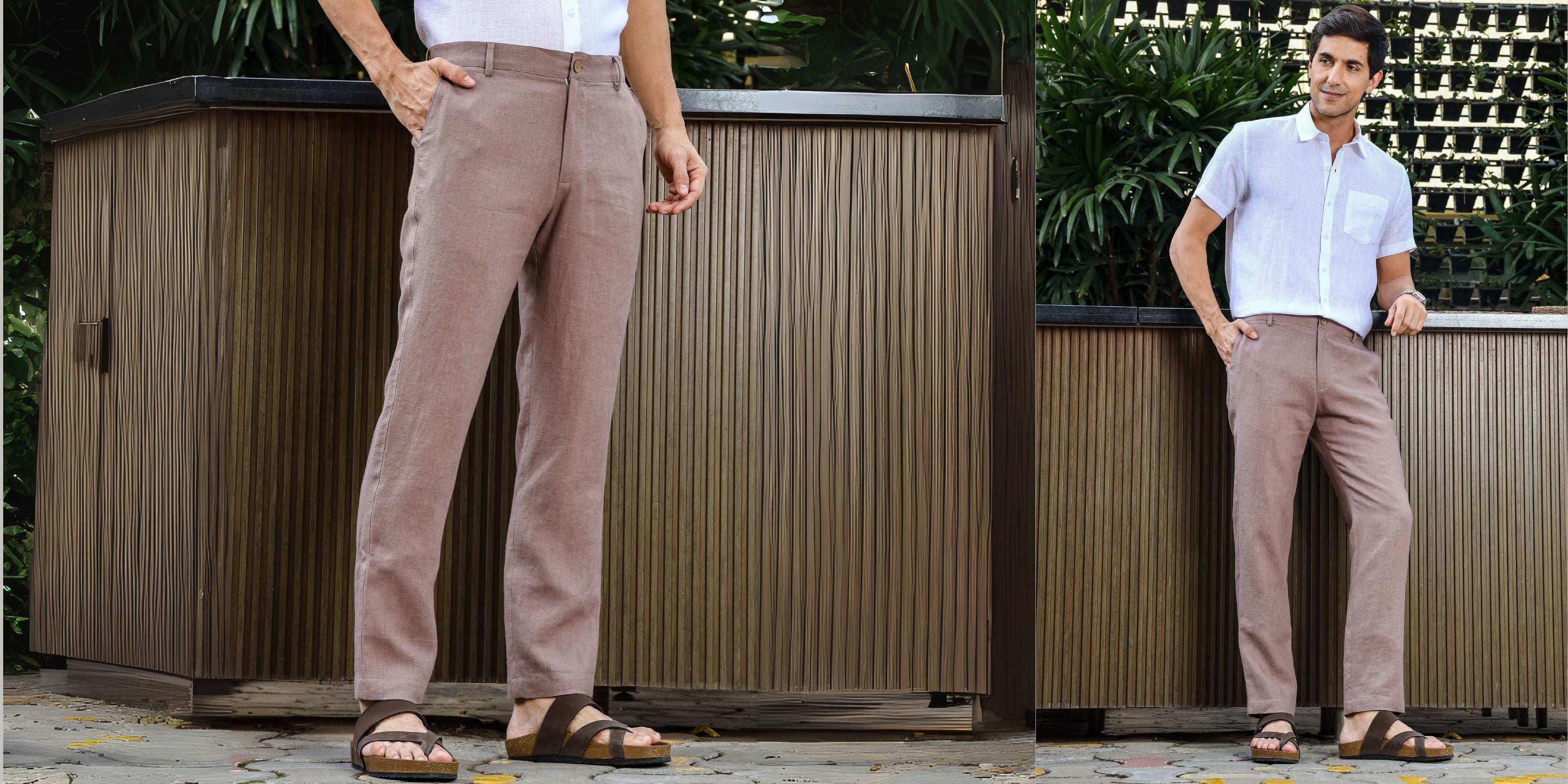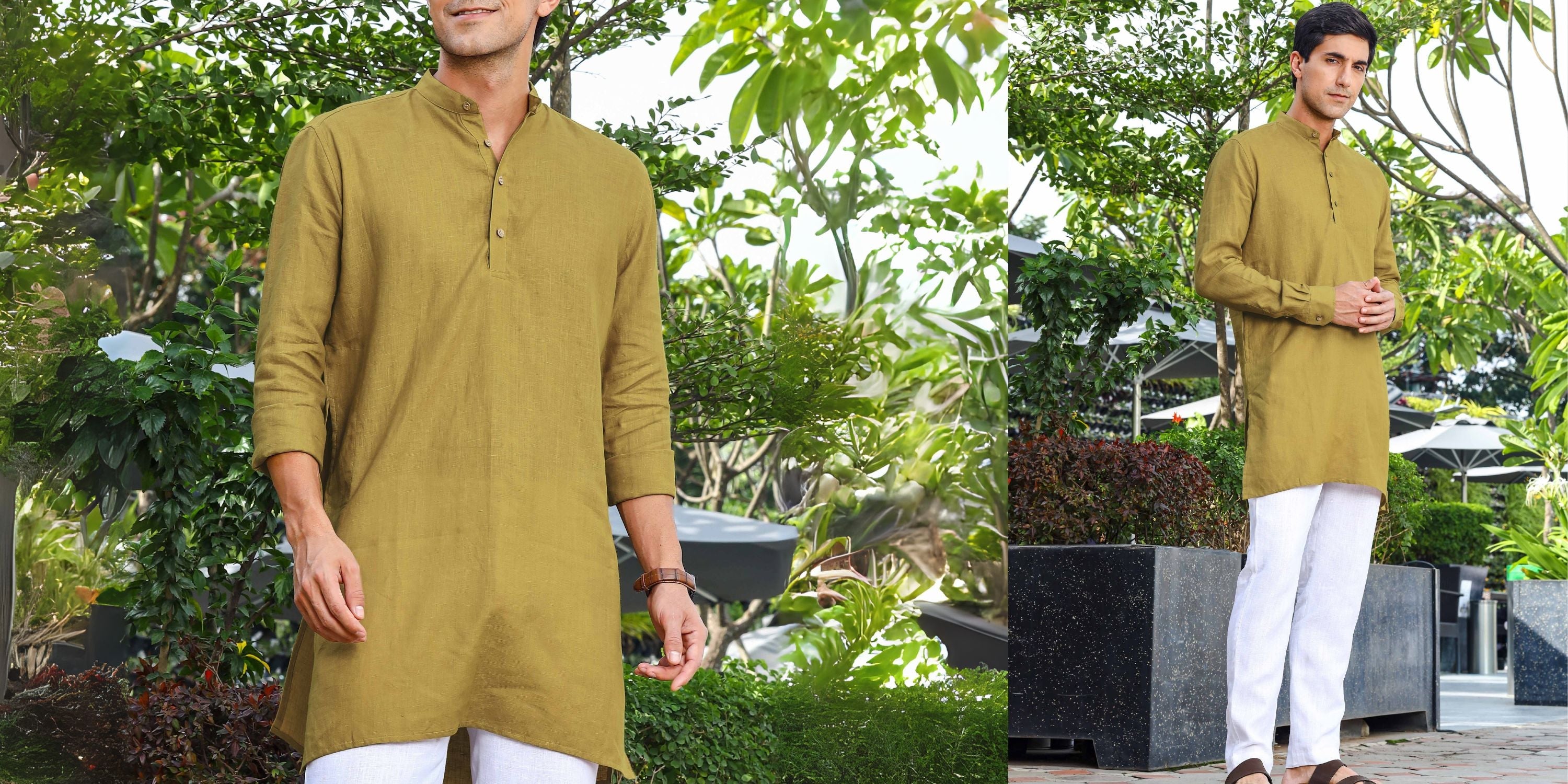How to Fold T-Shirts Like a Pro (Without Losing Your Sanity)
If you’ve ever opened your drawer only to find wrinkled tees, uneven stacks, or t-shirts that refuse to stay neat, it’s time to learn how to fold t-shirts the right way. Proper folding is more than just tidying up, it preserves the shape, fabric quality, and visual appeal of your wardrobe. Especially for premium fabrics like linen or delicate cotton blends, knowing how to fold t-shirts can dramatically extend their life while saving space.
In this guide, we’ll teach you multiple methods, from Martha Stewart’s classic approach to the revolutionary KonMari technique, all designed to make your drawers organized, your t-shirts wrinkle-free, and your daily outfit selection effortless. By the end, you’ll know exactly how to fold t-shirts for storage, travel, or display without ever damaging your garments.
Why Proper T-Shirt Folding Matters
Learning how to fold t-shirts is not just about aesthetics; it has several practical benefits that improve the longevity and usability of your wardrobe.
-
Prevents Wrinkles and Creases: Improper folding can create sharp lines that are especially visible on delicate fabrics like linen. Proper folding ensures your tees remain smooth and ready to wear.
-
Maximizes Storage Space: Efficient folding techniques allow you to fit more t-shirts into your drawers or shelves without creating a cluttered mess.
-
Protects Fabric Longevity: Folding along seams and avoiding harsh creases prevents stretching and fabric weakening over time.
-
Enhances Visual Appeal: A neatly folded stack of t-shirts is satisfying to look at and makes it easy to locate your favorite items without rummaging through piles.
When you understand how to fold t-shirts correctly, you’re not just organizing, you’re caring for your clothes and making daily life more efficient.
Choosing the Right Folding Method for Your Needs
Not every folding technique suits all situations. Knowing how to fold t-shirts for your specific needs ensures your wardrobe stays organized and functional.
-
Everyday Storage: For home drawers, you need methods that keep your tees accessible, neat, and wrinkle-free.
-
Travel: Rolling or compact folding prevents wrinkles in luggage and saves valuable space.
-
Display or Retail: Square or visually appealing folds work best if you want logos or designs visible on shelves.
Fabric Considerations:
-
Linen: Requires careful folding along natural seams to avoid permanent creases.
-
Cotton: More forgiving, but crisp folds maintain a polished appearance.
-
Blends: Fold gently to prevent stretching and preserve shape.
By selecting the right folding technique based on your purpose and fabric type, learning how to fold t-shirts becomes a seamless process that saves time and effort.
Method 1 – The Classic Flat Fold (Martha Stewart’s Method)
The classic flat fold, popularized by Martha Stewart, is a reliable method for both casual and premium t-shirts. It’s ideal for stacking neatly in drawers and maintaining a uniform appearance.
Step-by-Step Instructions:
-
Lay your t-shirt flat, front side down, on a smooth surface.
-
Fold each side toward the center, aligning the seams neatly.
-
Fold the bottom third of the shirt upwards.
-
Fold the top third down to create a tidy rectangle.
Pro Tips:
-
For linen or delicate fabrics, fold along natural seams to prevent sharp crease lines.
-
Smooth out any wrinkles before folding to maintain a polished look.
Best Use: Everyday storage, stacking, or packing in boxes.
Learning this basic method teaches the foundation of how to fold t-shirts neatly, which can later be adapted for other folding styles.
Method 2 – The File Fold (KonMari Method)
The KonMari method has transformed how people organize wardrobes worldwide. It allows your t-shirts to stand upright, making every piece visible at a glance. Mastering this technique is an essential part of knowing how to fold t shirts like a professional.
Step-by-Step Instructions:
-
Lay the t-shirt flat on a clean surface.
-
Fold each side toward the center, tucking in the sleeves.
-
Fold the bottom third upward, then the top third downward so the shirt stands vertically.
-
Place the folded t-shirt upright in the drawer, next to other folded shirts.
Benefits:
-
Maximizes Space: Standing t-shirts take less horizontal space and can fit more into a single drawer.
-
Easy Access: You can see all the t-shirts without disturbing others.
-
Organization: Makes seasonal rotation or outfit selection effortless.
Drawer Hacks: Use small dividers or boxes to keep upright t-shirts from toppling over.
Mastering this method ensures you always know how to fold t-shirts for quick access and stylish storage.
Method 3 – The Square Fold
The square fold is perfect for showing off logos, graphics, or favorite designs while keeping your wardrobe neat. This method is particularly useful for display shelves or folded storage that doubles as decor.
Step-by-Step Instructions:
-
Lay your t-shirt flat, smoothing out wrinkles.
-
Fold both sides toward the center to form a square shape.
-
Fold the bottom up to meet the top, creating a compact square.
-
Adjust edges so the square looks clean and uniform.
Best For: Displaying graphic tees or folded shelving where aesthetics matter.
Tip for Linen: Keep folds loose to prevent sharp crease lines that can damage fibers.
The square fold is a valuable addition to your repertoire when learning how to fold t-shirts for style-conscious storage.
Method 4 – The Roll Method
Rolling t-shirts is a versatile technique, ideal for travel and for avoiding deep creases. This method is essential when you want to know how to fold t-shirts compactly while protecting delicate fabrics.
Step-by-Step Instructions:
-
Lay the t-shirt flat and smooth out any wrinkles.
-
Fold the sleeves inward to create a straight rectangle.
-
Fold the shirt in half lengthwise if needed for a smaller roll.
-
Starting from the bottom, roll tightly toward the collar.
Benefits:
-
Prevents deep creases
-
Saves luggage space
-
Suitable for moisture-prone or humid environments
Rolling is a must-know technique for travellers or those looking to maintain their t-shirts’ quality while on the go.
Special Tips for Folding Linen T-Shirts
Linen requires extra care because of its natural fibers. If you’re wondering how to fold t-shirts without damaging linen, follow these tips:
-
Handle Gently: Avoid pulling or stretching the fabric.
-
Avoid Over-Folding: Too many folds create permanent creases.
-
Store Properly: Use breathable, dust-free containers or drawers.
-
Iron if Needed: Use low-heat steam and fold after cooling.
Following these precautions ensures your linen t-shirts remain fresh, smooth, and luxurious for years.
Hanging vs. Folding - How to Decide
Knowing how to fold T-shirts also involves understanding when to hang versus fold:
-
Hang: Structured shirts, linen blends, or delicate fabrics benefit from hanging.
-
Fold: Casual cotton tees, graphic t-shirts, and daily wear are better folded.
Seasonal Considerations: Folding t-shirts in breathable storage is ideal in humid climates to prevent mildew, while hanging works in dry conditions to maintain shape.
Choosing the right storage method complements your folding skills and protects your investment in quality fabrics.
Common Mistakes to Avoid
Even experienced organizers can make mistakes when learning how to fold T-shirts:
-
Folding when fabric is damp, leading to wrinkles or mildew.
-
Ignoring seam alignment, which causes uneven stacks.
-
Overstuffing drawers, crushing t-shirts and creating permanent creases.
-
Using harsh folding techniques on delicate fabrics like linen.
-
Failing to smooth wrinkles before folding.
Avoiding these errors ensures your wardrobe stays neat, functional, and stylish.
Final Thoughts
Mastering how to fold t-shirts improves your wardrobe’s appearance, protects your fabrics, and saves space. Whether you use the classic flat fold, the KonMari file fold, the square fold, or the roll method, consistent practice will make folding effortless. Pairing these techniques with high-quality fabrics like Linen Trail’s 100% pure linen t-shirts elevates both functionality and style, giving your wardrobe a polished, premium feel.
Love your t-shirts enough to fold them like a pro, but love them even more by choosing quality fabrics. Linen Trail’s linen t-shirts combine timeless elegance with breathable comfort, making them worth every fold.
Explore the Linen T-Shirt Collection
Read Our Latest Blogs
What to Wear Inside White Shirt | How to Style Linen Pants | How to Style Cargo Pants | What to Wear With Brown Pants Female | How to Style Cargo Pants Womens | What to Wear With Beige Pants Female | What Are Cargo Pants | What Are Chino Pants
Frequently Asked Questions
Q1. What is the easiest way to fold t-shirts for travel?
Ans: The roll method is perfect for travel because it prevents deep creases and maximizes luggage space.
Q2. How do I fold linen t-shirts without creating permanent creases?
Ans: Fold along natural seams, handle gently, and avoid over-folding. Store in breathable drawers.
Q3. Can I hang all t-shirts instead of folding them?
Ans: Casual cottons and blends fold better; hang structured or delicate fabrics like linen for best results.
Q4. Which method saves the most drawer space?
Ans: The KonMari file fold allows t-shirts to stand upright, maximizing vertical storage and visibility.
Q5. How do I keep graphic tees visible when folded?
Ans: Use the square fold or fold tees front-facing so logos and designs remain visible.
Q6. Should I fold t-shirts when they are damp?
Ans: Never fold damp t-shirts; wait until fully dry to prevent mold, mildew, and fabric damage.
Q7. How often should I refold t-shirts to maintain shape?
Ans: Refold seasonal or lightly used t-shirts every few months to maintain fabric integrity.
Q8. Are there special folding tips for delicate blends?
Ans: Fold gently, avoid sharp creases, and always align seams carefully to prevent stretching or distortion.









